How to Plan for (BWCA) Boundary Waters Canoe Trip.
![]()
Today, I’m going to go over everything you need to know to plan your next Boundary Waters Wilderness Canoe trip. The first time I did this I didn’t even know where to start. You don’t know what you don’t know. The permits, the rules, the canoes, on and on. What to bring and what to plan for.
It’s kinda overwhelming once you first start diving into BWCA trip ideas, especially if you have never done it before. The information is scattered and conflicted around chat websites, Forest Service websites, etc. I couldn’t believe when I started planning my first trip how hard it was to simply find a list of “must knows” for Boundary Water Canoe Area trips.
So, I figured I would put down a simple list here of things you might, or might not be aware of for those of you trying to plan your first BWCA trip.
Here goes nothing. I’m not listing them in any particular order, these are just things I would tell someone who told me there were going to start planning their first BWCA trip.
- It requires a Back Country Wilderness Permit
- Max of 9 persons and 4 canoes per permit
- The required Wilderness Permit is required per Entry Point location.
- Your permit is ONLY good for entering the BWCA at that single Entry Point location you select.
- Entry Points have limits on the number of permits issued per day.
- Starting in October there are no longer limits (the off-season opens up), but permits are still required.
- You have to list all persons going into the BWCA on the permit.
- You can get permits online and check availability at https://www.recreation.gov/permits/233396.
- Permits fill up fast, so plan early.
- If you’re renting canoes etc, your Outfitter can book your permit for you.
- If you’re booking your permit yourself, you will have to PHYSICALLY pick up your permit at a RANGER STATION.
- Check the hours for the ranger station you’re going to have to pick up your permit from.
- Call them days before, ensure they’re going to be open when you get there.
- Physical Maps are important and hard to come by.
- Order them early. REI carries them. https://voyageurmaps.com/
- Plan your route carefully based on your Entry Point.
- Understand portage difficulties and how hard it is to traverse and find them.
- Bring a compass.
- You cannot take metal or glass containers (when planning food).
- You can’t reserve campsites, first come, first serve.
- Campfires – Use only dead and downed wood easily broken by hand and smaller than your wrist.
- You can ONLY camp at designated Forest Service Campsites
- includes metal fire ring and wilderness latrine
- Only wash your dishes and clean fish at least 200 feet from shore
- If you’re going for the first time, use an outfitter and talk to them before for trip and route suggestions.
- Ensure you have a dry bag for your essential gear.
- Firearms are allowed in the BWCA (it’s Federal Land), but check all rules and regulations!
- Hang your food in Bear safe manner.
- Purchase a fishing license for MN before you go.
- Prepare to be cold and wet (rain gear is a must)!
- Have backup plans for campsites, and routes incase of bad weather!
- Have your exit date and instructions left with someone(s) who will contract the nearest Ranger station (you tell them) to you if you don’t return and contact them within an agreed-upon timeframe.
- Practice Leave No Tract
This is not an all-inclusive list, but should get you started if you’re planning your very first BWCA trip. The Boundary Waters are a beautiful and remote piece of wilderness that is rare in today’s world. Don’t underestimate how far from help you will be, also ensure you follow the rules and keep the environment clean for those who come after you.

